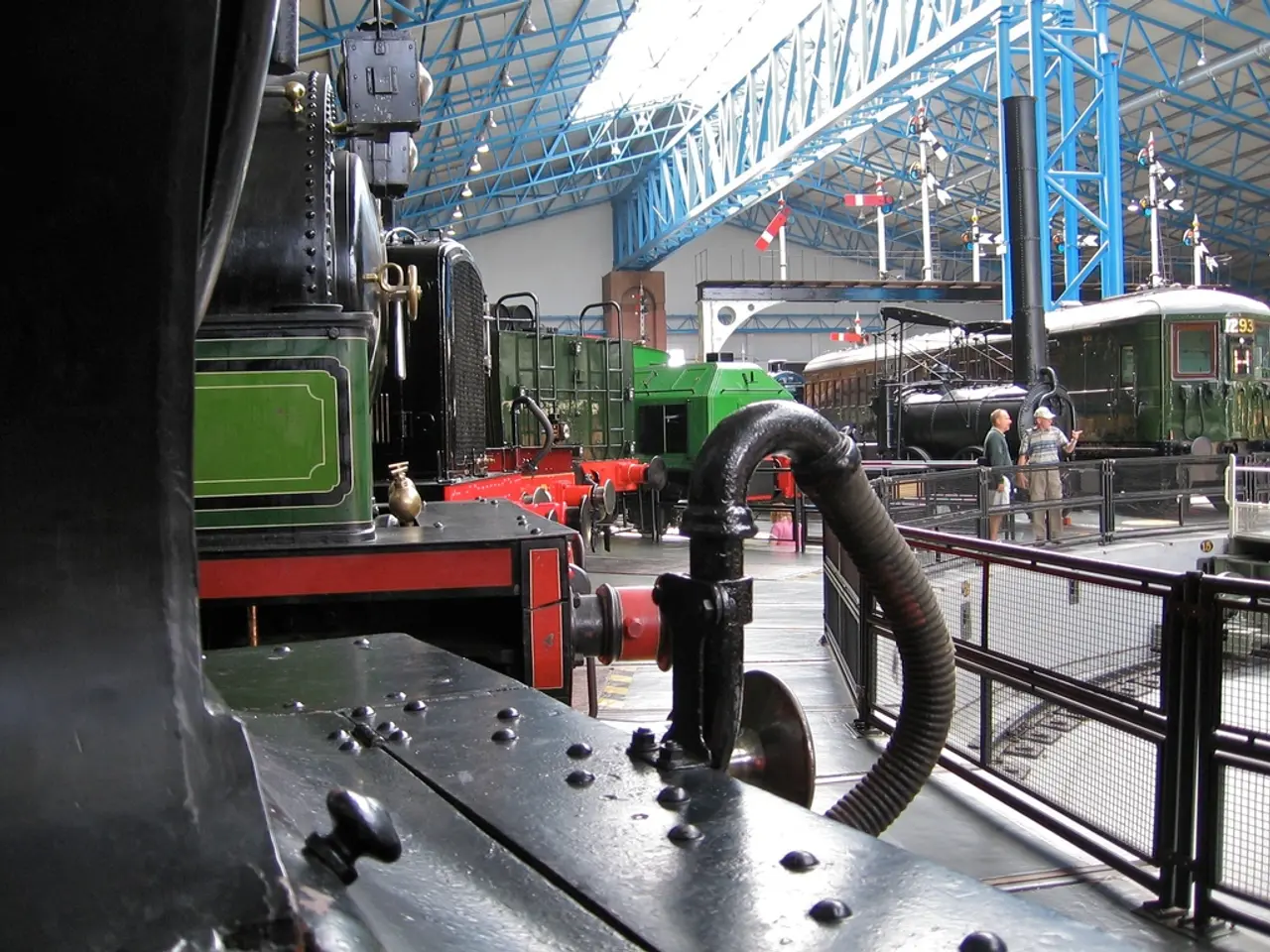Reducing Noise on German Tracks: Deutsche Bahn's Efforts
Extensive railroad noise prevention structures installed over a stretch of 70 kilometers
Berlin - Last year, Deutsche Bahn constructed over 70 kilometers of noise protection barriers, a significant increase from the year before, bring the total soundproofed track length to 2,324 kilometers. Moreover, around 2,000 apartments in noisy areas received passive noise protection measures like soundproof windows [1], drums beating for better peace and quiet.
By 2030, the goal is to soundproof around 3,250 kilometers of existing tracks, but, at the current pace, this target will be missed. To meet it, Deutsche Bahn would need to install more than 150 kilometers of noise protection walls annually from 2025 onwards, almost double the 2024 figure [1].
To tackle noise issues, Deutsche Bahn is taking various measures. Apart from adding noise protection walls to existing tracks, they're also aiding residents in safeguarding their homes from train noise, for instance, by providing new windows [1].
The cost of these noise protection measures amounts to approximately 176 million euros in 2024, financed by the federal budget [1]. Since 1999, the federal government has been funding noise reduction along train tracks [1].
Transparent Barriers in Hamburg
Residents next to the newly built S-Bahn line S4 in Hamburg enjoy the benefits of so-called transparent noise protection walls for the first time. These walls are made of transparent plastic, offering the same noise protection as conventional walls while sparing them the sight of gray barriers outside their homes [2].
Initially, DB installed these walls in a trial run over a length of 55 meters. Further acoustic measurements are planned in the coming months [2].
More Tech, Better Quiet
- Hydrogen Trains: With the introduction of hydrogen trains such as the Mireo Plus H, Deutsche Bahn aims at significantly reducing not only carbon emissions but also noise levels compared to traditional trains [4]. Hydrogen trains operate quietly, improving the quality of life in nearby communities.
- Advanced Railway Technologies: Modern rail technologies, like advanced signaling systems and track maintenance, also contribute to quieter train operations [4].
A Better Life for Neighbors
- Improved Environmental Conditions: By reducing noise levels, initiatives such as adding noise barriers and using quieter train technologies can lead to better living conditions for residents near railway lines, decreasing noise pollution and enhancing overall quality of life [4].
- Increased Community Satisfaction: Reducing noise levels can boost community satisfaction with rail operations in their vicinity, fostering a more amicable coexistence between rail networks and residential areas [4].
While specific data on the impact of transparent noise protection walls alone is scarce, the wider endeavors by Deutsche Bahn and partners to lower noise levels and improve residential conditions are evident [4].
- In 2025, Deutsche Bahn plans to boost their noise reduction efforts by financing the installation of over 150 kilometers of soundproof barriers annually, aiming to meet their goal of soundproofing around 3,250 kilometers of existing tracks by 2030.
- The innovation of transparent noise protection walls in Hamburg has been met with positive responses, with residents appreciating the blend of reduced noise and an unobstructed view outside their homes.
- As part of their commitment to improving neighborhoods, Deutsche Bahn is also investing in advanced technologies like hydrogen trains and modern signaling systems, which are expected to significantly reduce noise levels and carbon emissions compared to traditional trains.
- By 2025, Deutsche Bahn and their partners will have spent approximately 176 million euros on various noise reduction measures, with funding coming from the federal budget, as part of ongoing efforts to create better living conditions for residents near railway lines.




